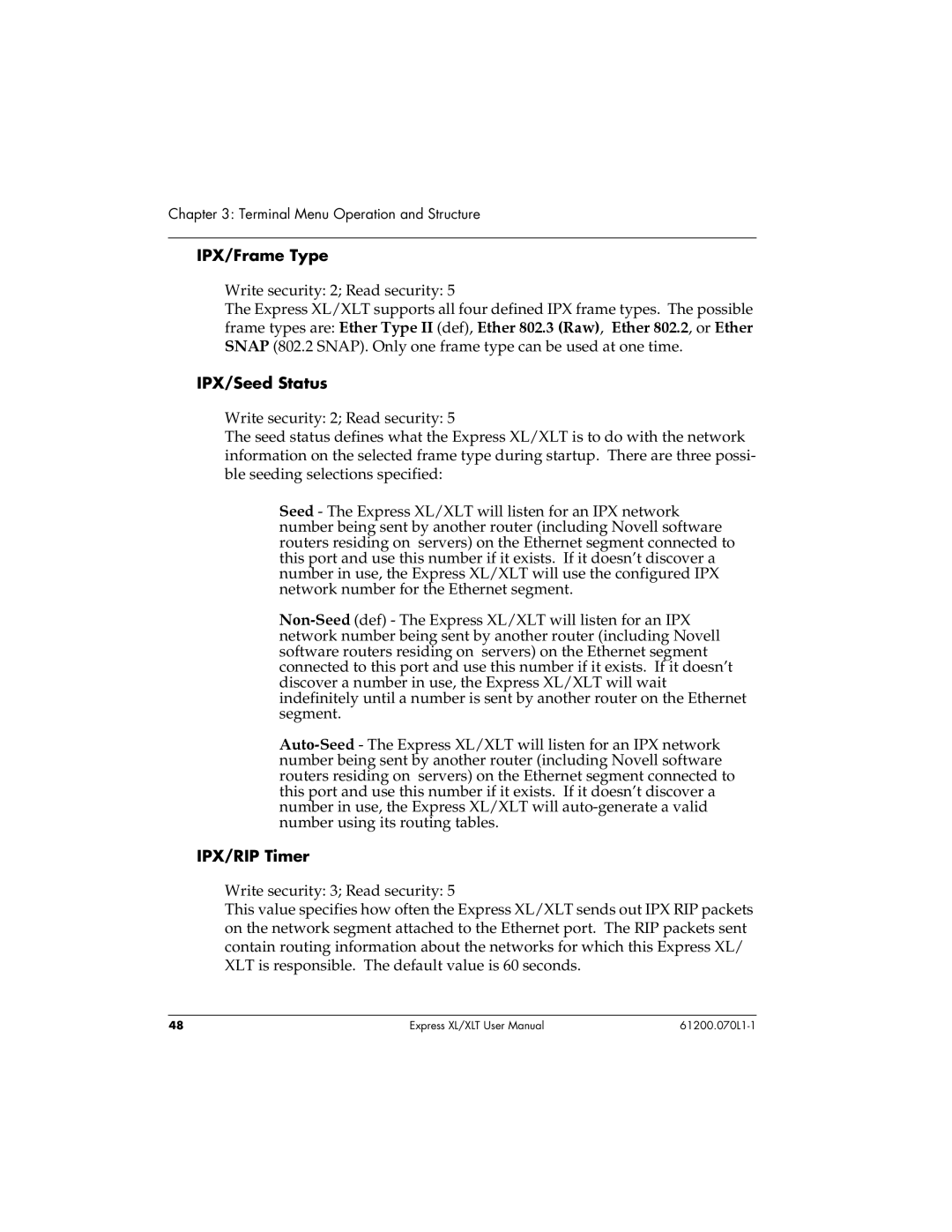
Chapter 3: Terminal Menu Operation and Structure
IPX/Frame Type
Write security: 2; Read security: 5
The Express XL/XLT supports all four defined IPX frame types. The possible
frame types are: Ether Type II (def), Ether 802.3 (Raw), Ether 802.2, or Ether
SNAP (802.2 SNAP). Only one frame type can be used at one time.
IPX/Seed Status
Write security: 2; Read security: 5
The seed status defines what the Express XL/XLT is to do with the network information on the selected frame type during startup. There are three possi- ble seeding selections specified:
Seed - The Express XL/XLT will listen for an IPX network number being sent by another router (including Novell software routers residing on servers) on the Ethernet segment connected to this port and use this number if it exists. If it doesn’t discover a number in use, the Express XL/XLT will use the configured IPX network number for the Ethernet segment.
IPX/RIP Timer
Write security: 3; Read security: 5
This value specifies how often the Express XL/XLT sends out IPX RIP packets on the network segment attached to the Ethernet port. The RIP packets sent contain routing information about the networks for which this Express XL/ XLT is responsible. The default value is 60 seconds.
48 | Express XL/XLT User Manual |
